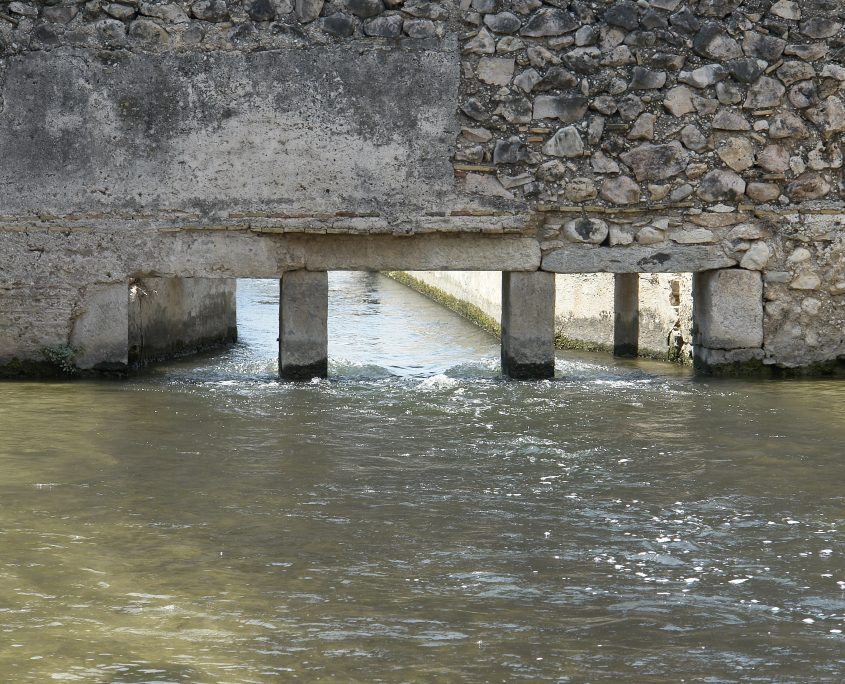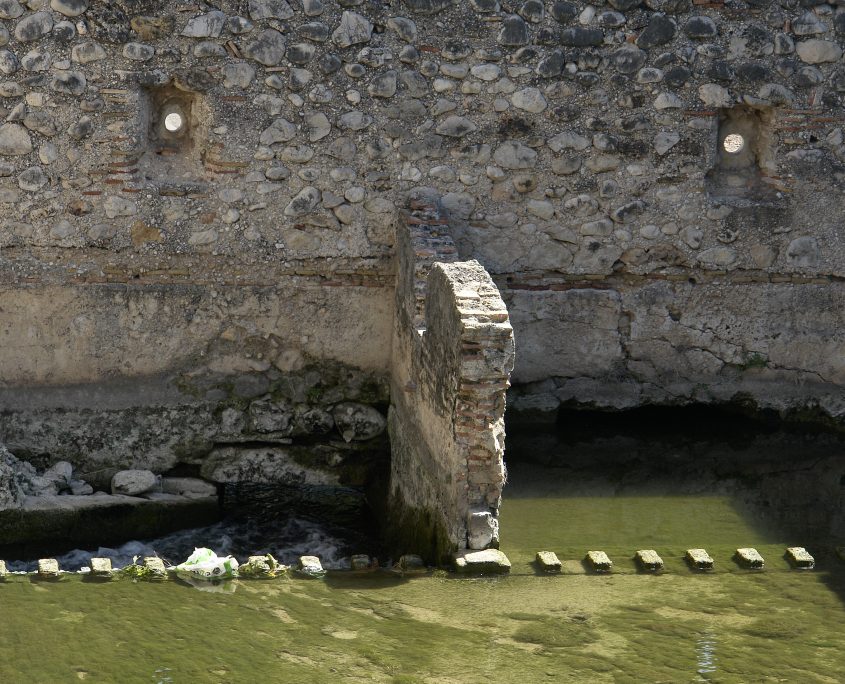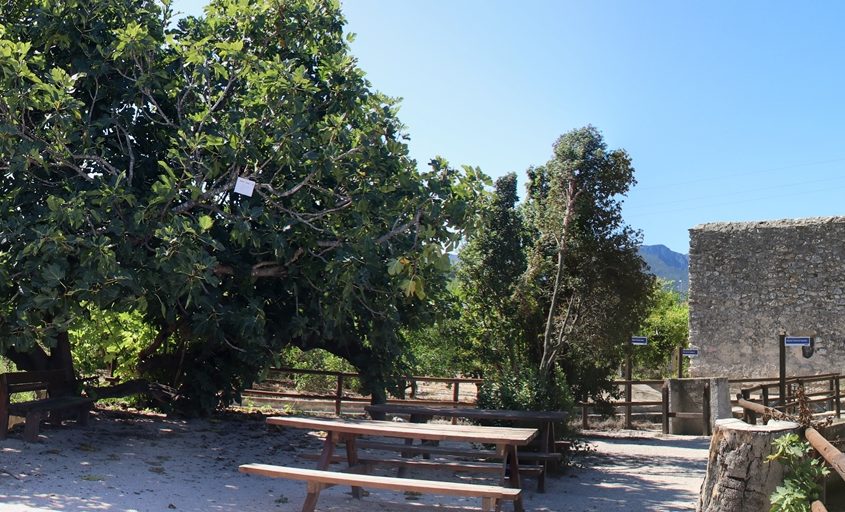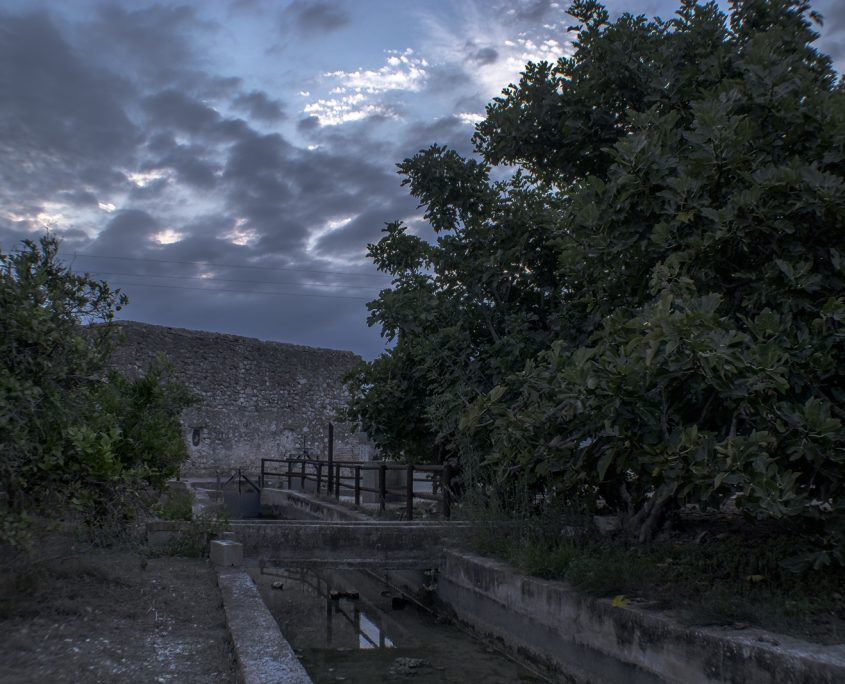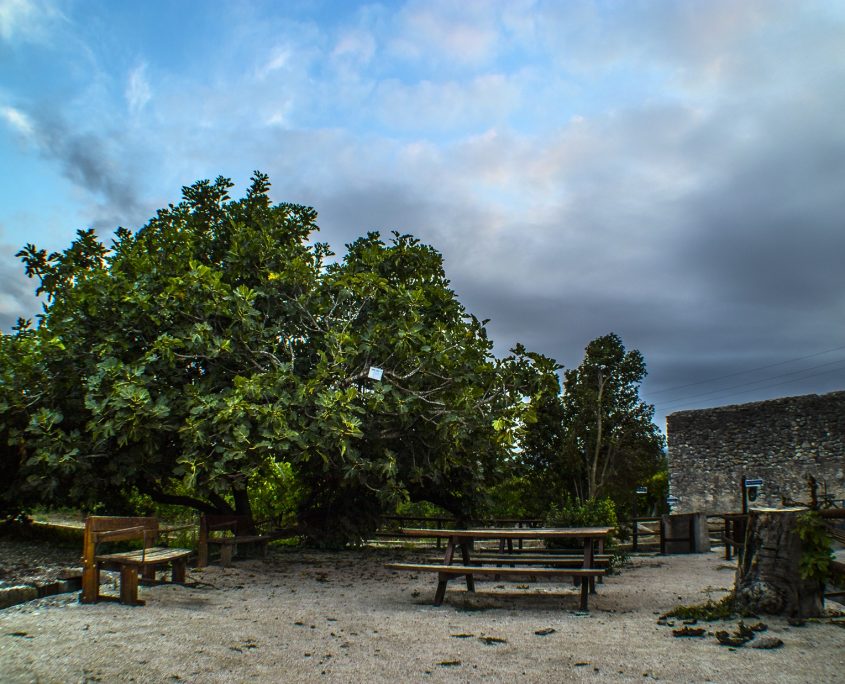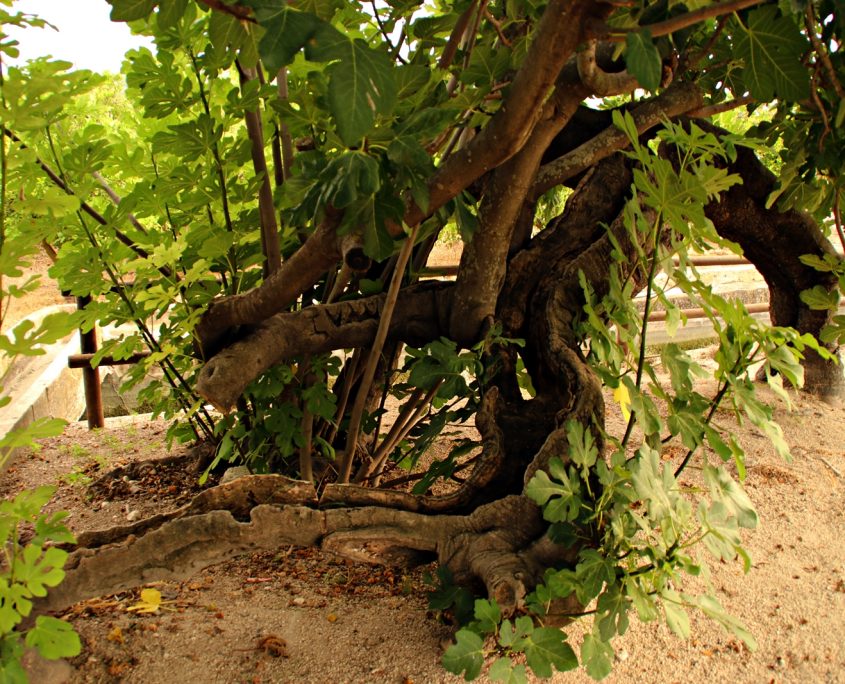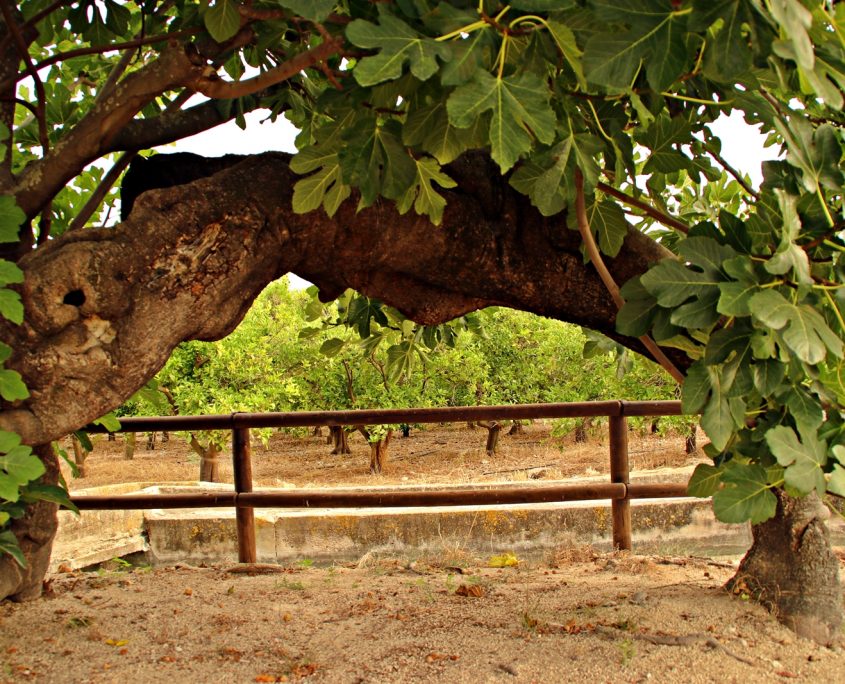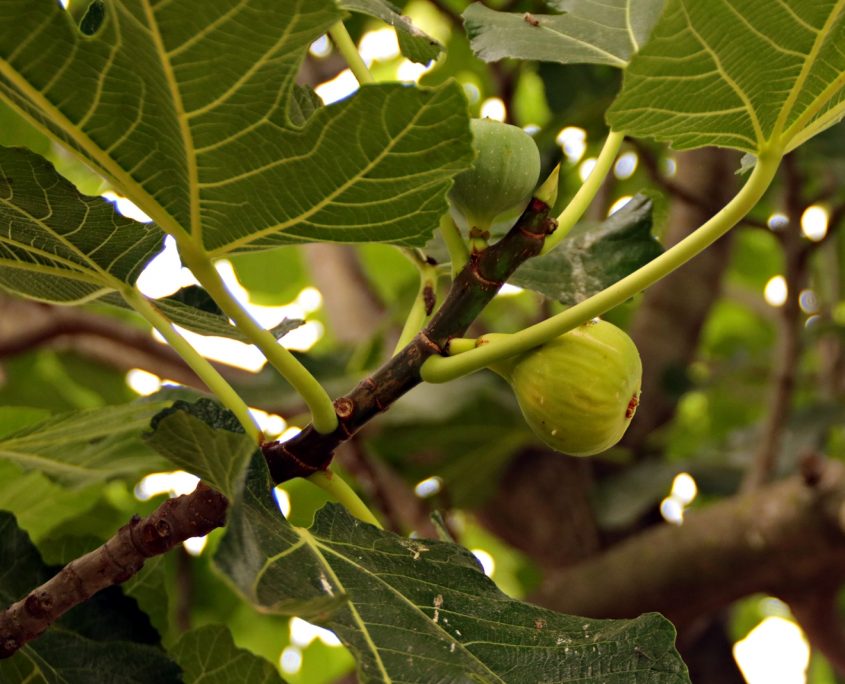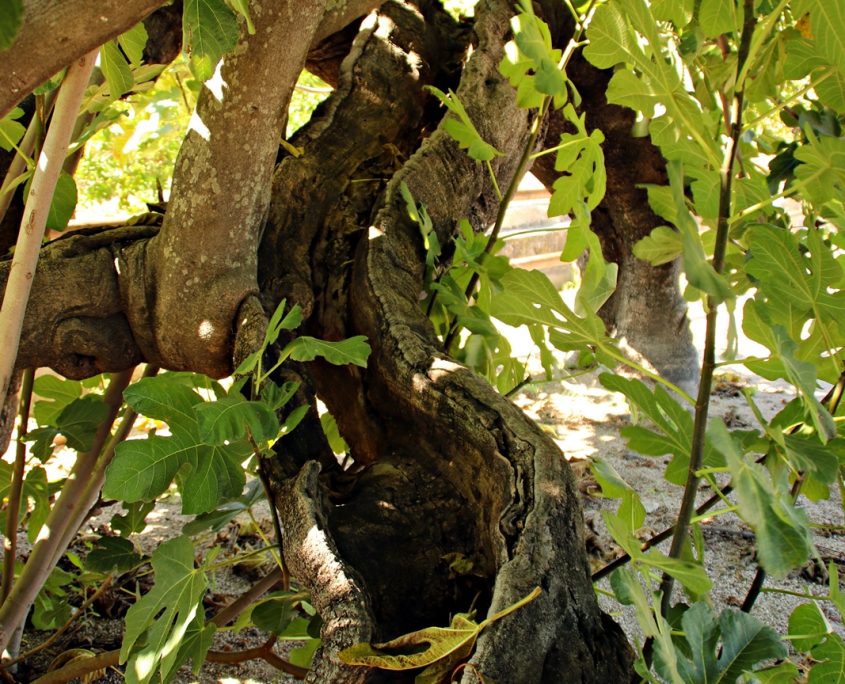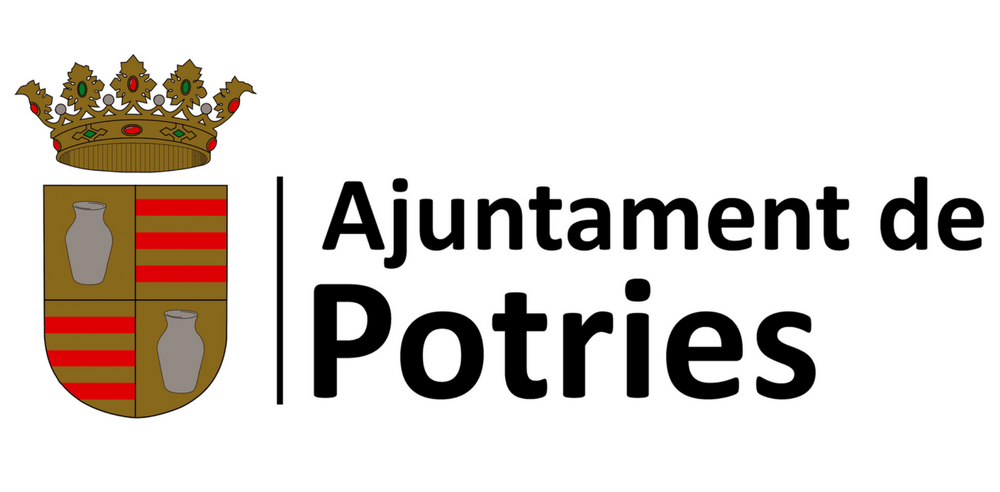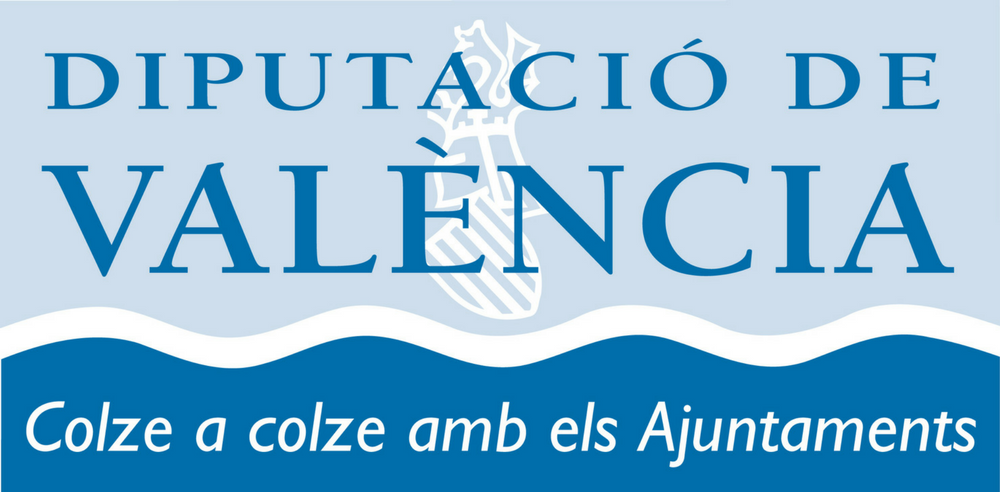Ficus carica – Family: Moraceae
General characteristics
Deciduous tree from the Ficus kind, which includes more than one thousand species, mainly found in warm and intertropical regions.
Fig trees in wild specimens are “monoic” (where both sexes are found in the same plant) and are called “goat fig trees”. Under cultivated conditions, they are “diodic”, which means that each plant only gives masculine of feminine flowers. The goat fig tree lives in the rocks of the Mediterranean region, and needs for its reproduction the help of an insect (the Blastophaga psenes), which lives and breeds in the inflorescence.
Its height ranges from 5 to 10 metres, and it has a wide cup, a characteristic smell, and also contains latex. The bark is greyish, its leaves varying in shape (the external ones being larger and more simetric than the inferior ones).
It blooms from February to April, with a great number of unisexual flowers grouped together in a meaty piriform shape receptacle, botanically named “sicono” (or fig). The fig ripens in August, September and October. Some types of fig trees, called biferes, give a fruit called brebas (brevas in Spanish) or albacoras, which ripen at the end of June.
Uses
Figs are edible fruits, making with them edible products, which are also used for medicinal purposes. The wood from the fig tree is used for making tools, furniture, and also for construction.
When the leaves are torn, a white latex is released, which can irritate the skin but has been used to remove warts.
Curiosities
Among the wide variety of fig trees, the most renowned of all is the breba, albacora or flower-fig; it is big, fleshy, soft, watery and cooling, and has the advantage and priviledge of being an early fig, a seasonal fruit, daughter of the fresh morning light of June.
There are many kinds of breba trees, more or less abundant, better or worse in quality, but the most prestigious one is the black fig. In general, the most prestigious fig among farmers is the Neapolitan, or commonly pronounced “poletana”, an splendid dark red looking fig. But whoever keeps a black “Burjassor” fig tree in a corner of their back yard has a relic, and prefers it to the “poletana” type for its quality.
Other people might prefer white figs, such as “white vera”, “Pamis”, or “drop of honey” (gina), which is divine, and ripens even earlier than some very good “bacoras”. These fruits always receive evocative and endearing names, such as: “the little tender one”, “the nag blood”, “the partridge eye”, the “white burjassot”, the “safarina” or “garsalina” in valencian language, the latter of these being one of the earliest to grow.
Also there are other fig types called: the “little leg”, “the one of the small bite”, the “Sejola”, the “hairy one” and “the Ruscina”, all of these being black or red figs, such as the “Verduna, verdal, Verdaleta”, and the “Vernesca or verdal” from Orihuela, one of the most admired, and the latest to be ready to eat, alongside with the stripped figs or the courgette type.
The fig tree at the Casa Clara
There is only one fig tree left from the water serving hatch at the Casa Clara. The other had been cut. The one that remains is lying down, and has an arch shaped trunk, which gives white figs.
CONDITION: INJURIES: Due to pruning and vandalism, this tree has had many fractured branches, but neither to be found on the tree nor on the ground. Putrefaction: the main trunk is rotting completely, and initial rotting signs in secondary trunks and branches can also de found. BARK DISCHARGES are located in the trunk, similar to sawdust, dark brown and wet, in the direction facing the Molí Canyar. Shading: on the Casa Fosca in the afternoon, and on two bushes planted next to it, facing south. TRUNK CONSISTENCY: The main trunk is completely hollow, with the bark falling and rotting. Remarks: There are xilofagous insects under the falling bark. They cannot be seen, but they leave traces under the trunk bark, like dark brown sawdust, as well as droppings. It also has white larvae and flat scars under the falling bark, like a spider web.
ASSOCIATED LIFE: FUNGUS: Not observed, but it is likely to have them on its hollow trunk. There are spread greyish-white dots, which are not lichen; Apparently there are these two types of liquen, (Epifitas and hemiparásita): one is intensely engraved, greenish yellow in color; and the other less engraved greenish grey. FAUNA (Observed): Ants. FAUNA (Heard): Birds around the area. TRACES: droppings from birds (possinly blackbirds, among others) and eaten figs. Observations: the branches have a lot of woodworm, detected by the abundant presence of very fine yellow sawdust on the leaves, but only on thin branches, which are old or dead.
ENVIRONMENT:
- NATURAL: Near the Serpis, surrounded by fields among two Canals. Acequias.
- ANTHROPIC (man-made): it is located between two canals and the water distribution leasure area under the fig trees. It is surrounded by cultivated fields, orange groves both in production and abandoned. It is next to the Oliva canal, and the water distribution system (acequiero) that crosses the Oliva canal. Permeable ground, mateiral against wildgrass and fine gravel.
| Fig tree | ||
| Trunk perimetre at 1.30 m |
|
|
| Height |
Ethnobotany and/or associated history:
It is a tradition for villagers and walkers in general to pick figs from trees. The tree is found among two historic canals and in front of the Casa Clara. From there one can see the Moli Canyar, the Serpis water distribution house and the “casa de la Pará” (the railway stop hut). Also the “Molló de la creu”, “Mondúver” and Ventura” mountains.
.- The water distribution system at the CASA CLARA (The water route)
The Casa Clara is a particular building that has become a key element for the functioning of the whole water system, a place where one could verify the correct share of the available water around the area. That is why they keep an hermetic structure, in order to guarantee its correct funcioning; for this, only the person in charge of the right distribution of water in the system had acces to the house. It is a practical, simple and basic square shaped construction important for the hidraulic net; the “cajero” or checkpoint in the canal widens before arriving to the building, so that water can arrive as calmly as possible. At both ends, enormous stone holders join together the input and output of water. These openings were closed until recently and reinforced by impressive cast iron grills.
At the main entrance a vital element is placed; this is a stone bench on the canal bed, used to divide the water from the main canal (or mother). The doors are the spaces left between the stone blocks. The water sharing system allows the right of each grove to get a real amount of water. As the water is levelled inside the water partition, it will always go through each hole according to the proportions related to the total available water. This means that during a drought less water will run through the canal, but the same amount of water will go through each hole. This is a fair and balanced system. Considering that the proporcional water distribution system originated in the Muslim world, and remained after the Catalonian-Aragonese occupation, we consider that this hidraulic system had already been existing before the conquest by mid XIII century.
On foot Access from parking:
If you arrive with a vehicle, we advise you to leave the car in the parking lot at the village entrance, and walk 380 metres until the fig tree. Beware when crossing the main road.
If you arrive by bike or motorbike you can park right there, at the Casa Clara site, which is prepared for both types of vehicles; the site also has a picnic area with benches and tables.
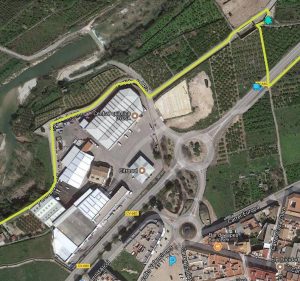
Location:
GPS parking location:
X, Y: 38.91606, -0.19584
GPS tree location:
X, Y: 38.91872, -0.19449

Accessibility adapted to everyone.

